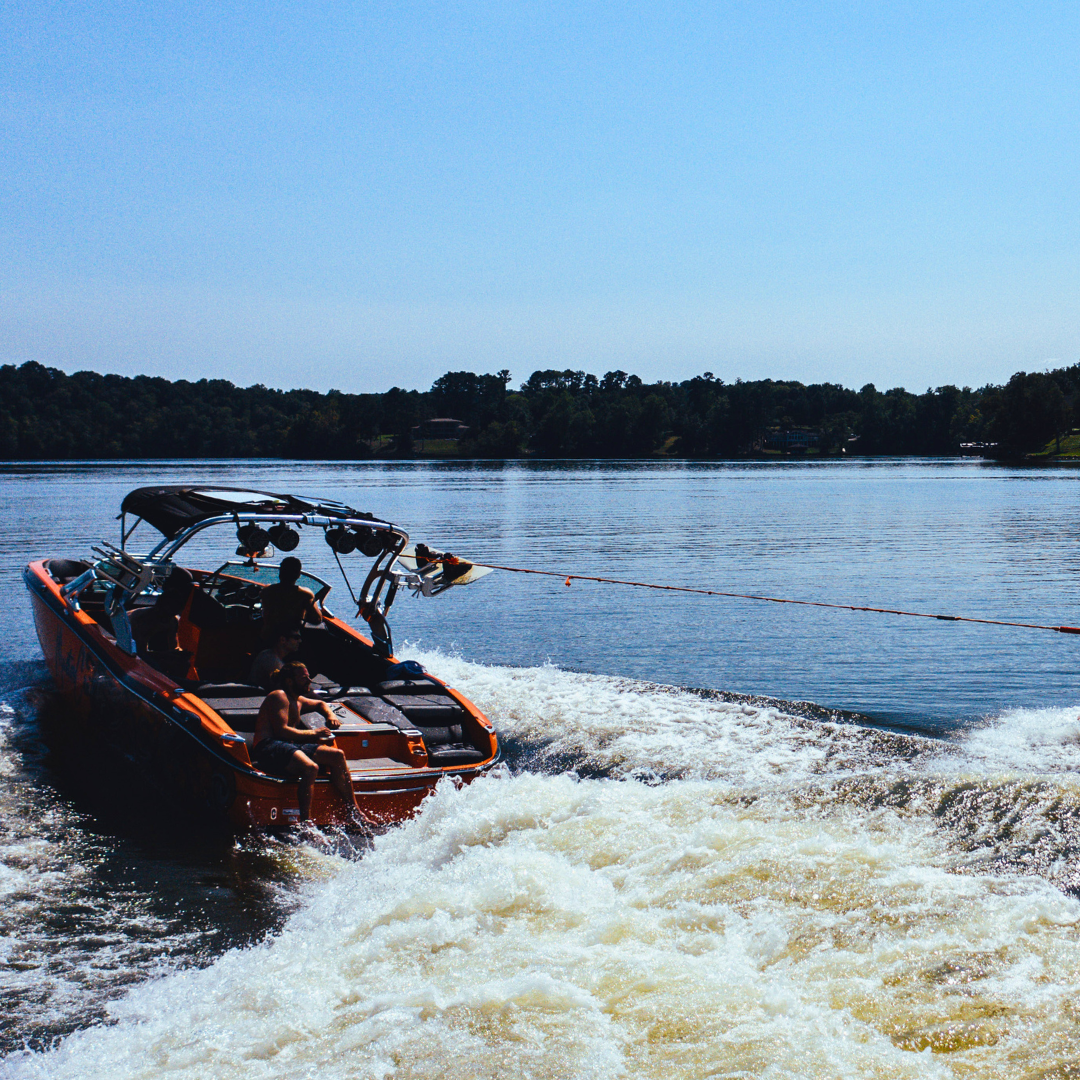
How Different Boat Hulls Affect Your Wakesurf Wave
Share
Here at Smith Board Co., we often talk about performance in terms of three main factors: Speed, Air, and Agility. Your wakesurf board significantly influences each of these, but it's important to recognize that there are several other variables outside your board design that impact your overall surfing experience. One of the biggest, and most overlooked, is your boat's hull design.
Performance Revisited: Speed, Air, and Agility
To keep it simple:
- Speed is how quickly your board can move across and down the wave, letting you cover ground efficiently.
- Air refers to your board's capacity to launch you off the top of the wave for tricks and jumps.
- Agility describes your ability to maneuver quickly and smoothly, whether that's carving, performing tricks, or responding instantly to changes in the wave.
The quality and shape of the wave beneath your feet determine your potential in each of these areas, and that’s exactly why the hull design of your boat matters so much.
External Factors Affecting Performance
While your board is critical, other factors influence your surfing, including:
- Boat hull design
- Ballast distribution and weight
- Surf systems (surf tabs, gates, etc.)
- Water conditions (depth, waves, chop, etc.)
In this article, we’re specifically diving into boat hull design. If you're curious about other boat features, check out our previous posts: Best Features to Have in a Wake Boat for Wakesurfing and Can You Wakesurf Behind Any Boat?.
Why Hull Design Matters
Boat hull design is crucial because it's literally shaping the wave you're surfing. Different hull shapes displace water differently, affecting wave size, steepness, length, and cleanliness. Essentially, your hull provides the foundational wave that other systems (ballast and surf tabs) then optimize.
Hull Types and Their Impact on Your Wave
Let's get into the main types of hulls and what each means for your surfing:
1. Deep-V Hulls
These hulls are designed for maximum water displacement, creating larger, steeper waves with significant push. They're fantastic if you're looking for big air and strong, consistent waves that give you speed to play with. Deep-V hulls are common in premium wakesurf boats like Centurion’s Opti-V Hull.
Good for: Maximum Air, powerful wave push, advanced tricks.
2. Modified-V Hulls (Crossover Boats)
Modified-V hulls strike a balance, typically seen in crossover boats designed for multiple watersports (wakeboarding, wakesurfing, cruising). These boats provide decent wave formation, not as massive as specialized hulls, but versatile enough for enjoyable surf sessions with moderate speed and agility. Malibu’s Diamond Hull is a solid example of a crossover design.
Good for: Balanced performance, moderate air and agility, versatile use across different water sports.
3. Flat or Shallow-V Hulls
These hulls aren't great for wakesurfing because they don't displace enough water. They’re efficient for speed and fuel economy, but produce smaller, flatter wakes. You’ll struggle to generate decent air or agility, making tricks and dynamic surfing challenging.
Good for: Not much in wakesurfing terms; better suited to high-speed activities like waterskiing or general cruising.
4. Specialty Surf Hulls (Convex-V, Wake-Optimized)
Specialty wakesurf hulls, like Tige’s Convex V Hull, are designed explicitly for optimal wake formation. These hulls naturally produce large, clean waves without needing as much ballast. They deliver great all-around performance, making them ideal for surfers who love responsive agility, clean wave faces, and solid launch capabilities.
Good for: Excellent all-around performance, strong agility, consistent speed, and reliable air.
Matching Hull Performance to Your Riding Style
Realistically, not everyone can just pick up a new boat to perfectly match their riding style. Instead, understanding your current hull can help you tailor your surfing expectations and adapt your riding.
- Deep-V Hull: If you're riding behind one, push yourself to try bigger tricks. The wave size and push support aggressive, advanced surfing.
- Modified-V Hull: Enjoy the versatility; focus on smooth transitions, stylish carving, and moderate tricks. You’ll have enough wave size and consistency for creative, playful riding.
- Flat Hull: Consider wakeskating or using the opportunity to refine basic skills. Advanced tricks and big airs will be challenging, but you can still enjoy carving and basic maneuvers.
- Specialty Hull: Take advantage of this optimized wave for dynamic riding, smooth flow, and solid tricks. Explore new moves and perfect your surfing style.
Beyond the Hull—Integration with Ballast and Surf Systems
Hull shape sets the stage, but ballast systems and surf devices fine-tune your wave. Even if your hull isn't ideal, careful ballast distribution and surf system adjustments can noticeably enhance your wakesurfing experience.
Bringing it all together
Boat hull design significantly impacts wakesurf performance through speed, air, and agility. While your wakesurf board matters tremendously, don’t overlook the importance of the boat beneath your feet. Understanding your boat’s hull can help you adapt your riding style, maximize your fun, and push your wakesurfing to new heights.
